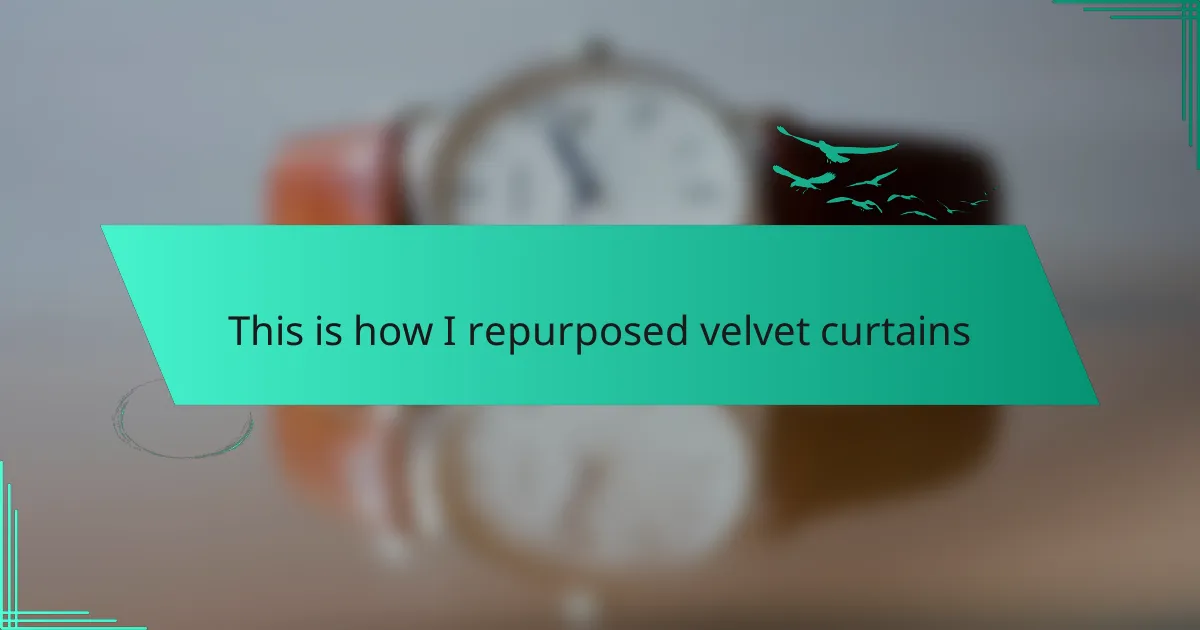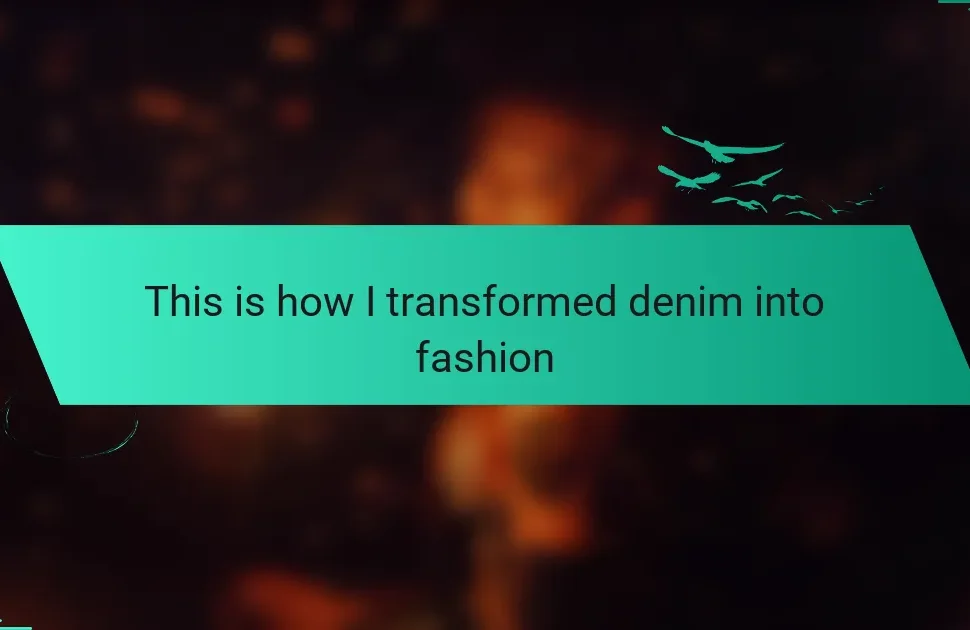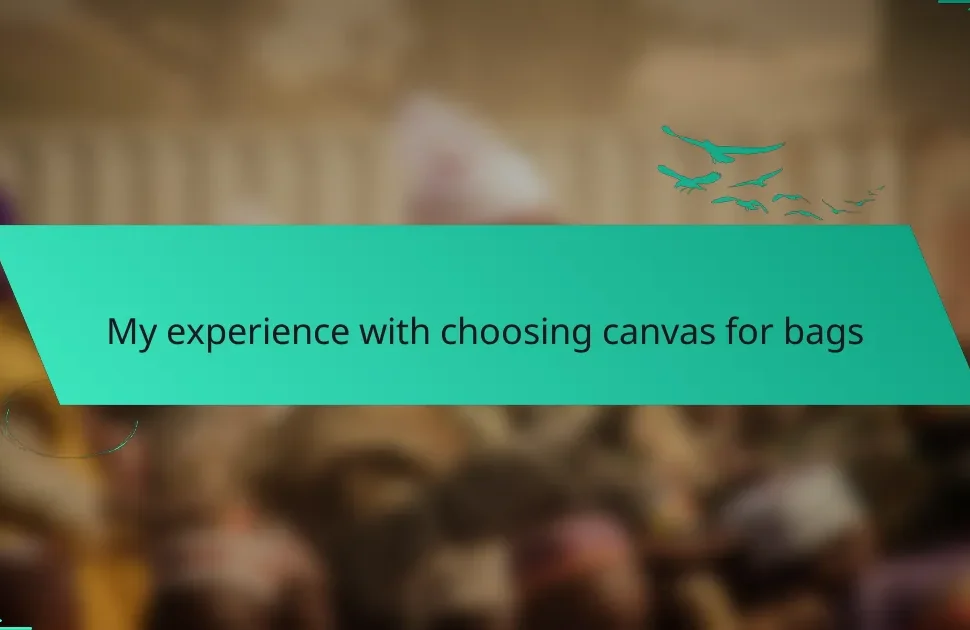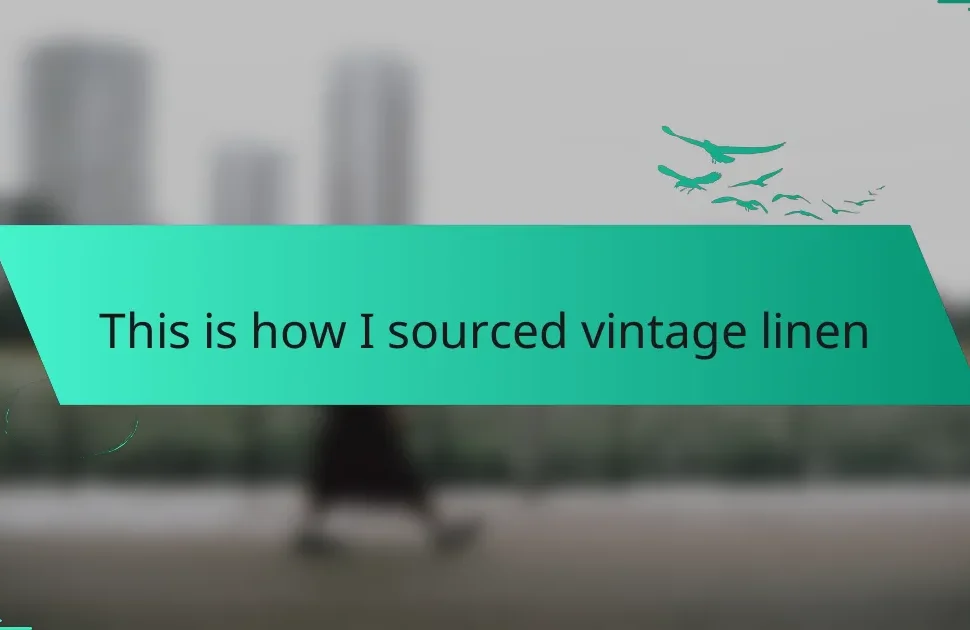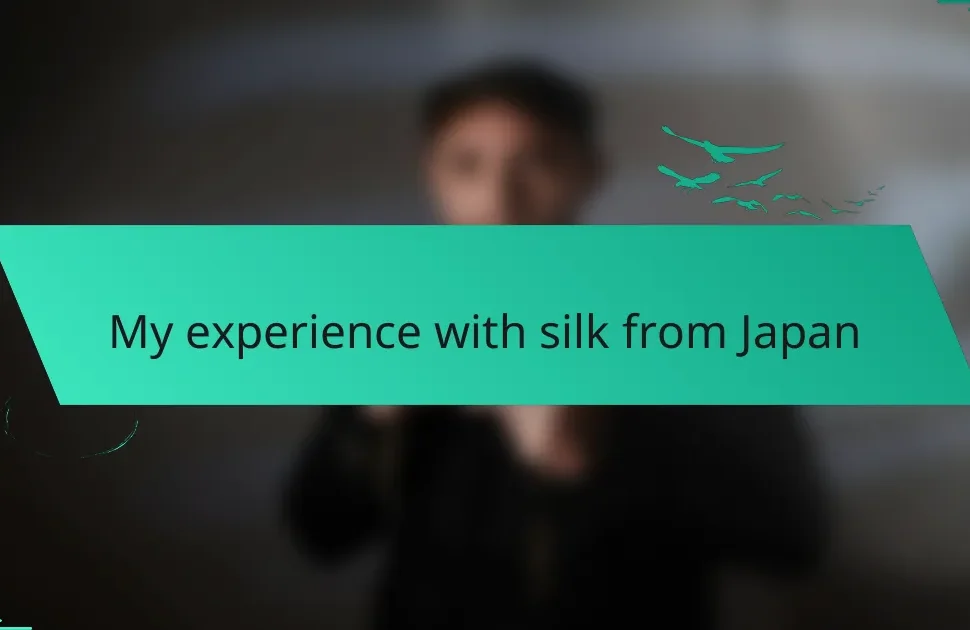Key takeaways
- Vintage fashion DIY promotes sustainability by repurposing materials, reducing waste, and allowing for creative expression.
- Choosing the right fabrics, such as velvet and cotton, can enhance DIY projects and create unique, personalized items.
- Having the right tools and materials is essential for successful repurposing, making the crafting process smoother and more enjoyable.
- Embracing trial and error during DIY projects fosters creativity and results in one-of-a-kind creations that reflect individual style.
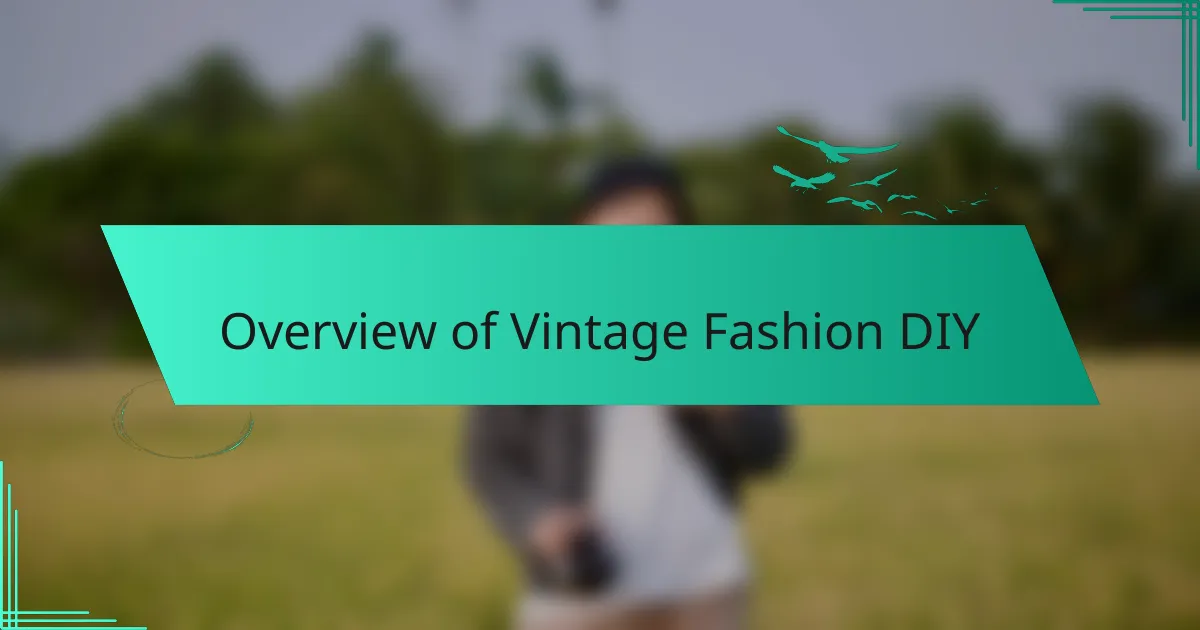
Overview of Vintage Fashion DIY
Vintage fashion DIY offers a unique opportunity to breathe new life into cherished materials, like those stunning velvet curtains I once found at a thrift store. Have you ever stumbled upon an item that sparked your creativity? Transforming such pieces into wearable art or stylish home décor is not only rewarding but also a sustainable choice that honors the craftsmanship of the past.
As I dove into my own DIY projects, I marveled at how repurposing materials allows me to express my individuality. It’s incredible to customize something pre-owned, turning it into a statement piece that feels uniquely mine. Isn’t it fascinating how a little creativity can reshape the narrative of old fabric?
Engaging in vintage fashion DIY connects us to history, creating stories woven within every stitch and seam. Each project serves as a reminder of the era it originated from, allowing us to appreciate vintage aesthetics while forging our own paths. Don’t you think that’s what makes fashion truly timeless?
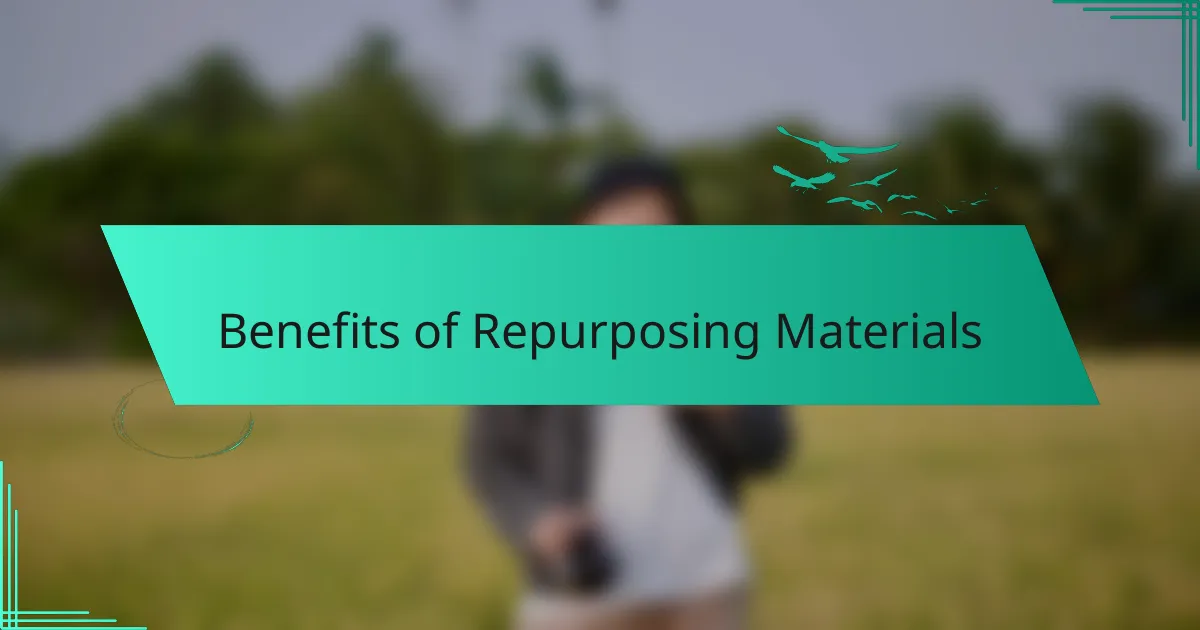
Benefits of Repurposing Materials
Repurposing materials, like velvet curtains, not only saves money but also allows for creative expression. When I decided to transform a once-draped window adornment into chic throw pillows, I felt a rush of excitement as I uncovered the fabric’s hidden potential. There’s something really rewarding about taking an item that might have been discarded and breathing new life into it.
Choosing to repurpose materials also benefits the environment significantly. Instead of contributing to landfill waste, you’re giving your fabric a second chance, which feels incredibly fulfilling. Plus, every repurposed project tells a story – your story. Each seam and stitch speaks of the time, effort, and creativity you poured into creating something beautiful and unique.
Here are some benefits of repurposing materials:
- Cost-effective: Save money by using what you already own instead of buying new materials.
- Environmental impact: Reduce waste and minimize your carbon footprint.
- Creative outlet: Foster creativity by transforming ordinary items into something extraordinary.
- Unique items: Create one-of-a-kind pieces that reflect your personal style and story.
- Skill development: Enhance your crafting skills and gain new techniques along the way.
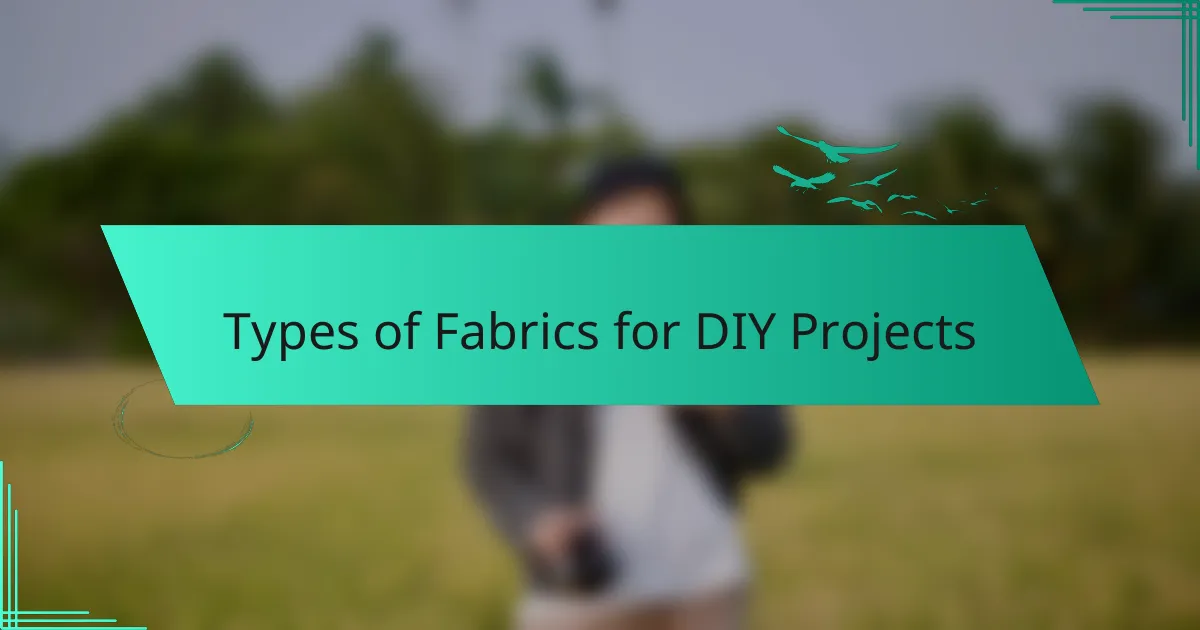
Types of Fabrics for DIY Projects
When it comes to DIY projects, choosing the right fabric can transform your ideas into stunning creations. I often gravitate towards velvet, especially when repurposing curtain material. Its rich texture and depth create a luxurious feel, which can elevate even the simplest of projects.
Another fabric I enjoy working with is cotton. It’s versatile and easy to handle, making it perfect for beginners. I remember my first DIY project with cotton – I made a simple throw pillow, and it felt rewarding.
Here’s a quick comparison of popular fabrics for DIY projects:
| Fabric Type | Characteristics |
|---|---|
| Velvet | Luxurious look, soft texture, can be a bit challenging to sew. |
| Cotton | Versatile, easy to sew, comes in many colors and patterns. |
| Linen | Breathable, strong, but wrinkles easily; great for organic appeal. |
| Denim | Durable, offers a classic look; great for heavier projects. |

Creative Ideas for Velvet Curtains
Repurposing velvet curtains can truly elevate your home decor while giving your space a unique touch. One of my favorite projects was transforming old velvet curtains into plush throw pillows. It brought a cozy and luxurious feel to my living room, allowing me to enjoy the fabric in a new way. Additionally, using the curtains as fabric for a stunning wall tapestry not only adds elegance but also becomes a conversation starter for guests.
I also recommend making smaller items like lavender sachets or even fabric bags for gifts. The weight of velvet gives these projects a luxurious feel compared to using standard fabrics. Each time I catch a whiff of the dried lavender, I’m transported back to my crafting day, surrounded by vibrant colors and textures, which brings a smile to my face.
Here’s a handy comparison of some creative repurposing ideas for velvet curtains:
| Repurposing Idea | Details |
|---|---|
| Throw Pillows | Cozy addition to any couch, adds texture and warmth |
| Wall Tapestry | Elegant artwork alternative that enhances your wall decor |
| Lavender Sachets | Combines luxury and fragrance; perfect for drawers and closets |
| Fabric Bags | Reusable, chic gift wrapping option, eco-friendly choice |
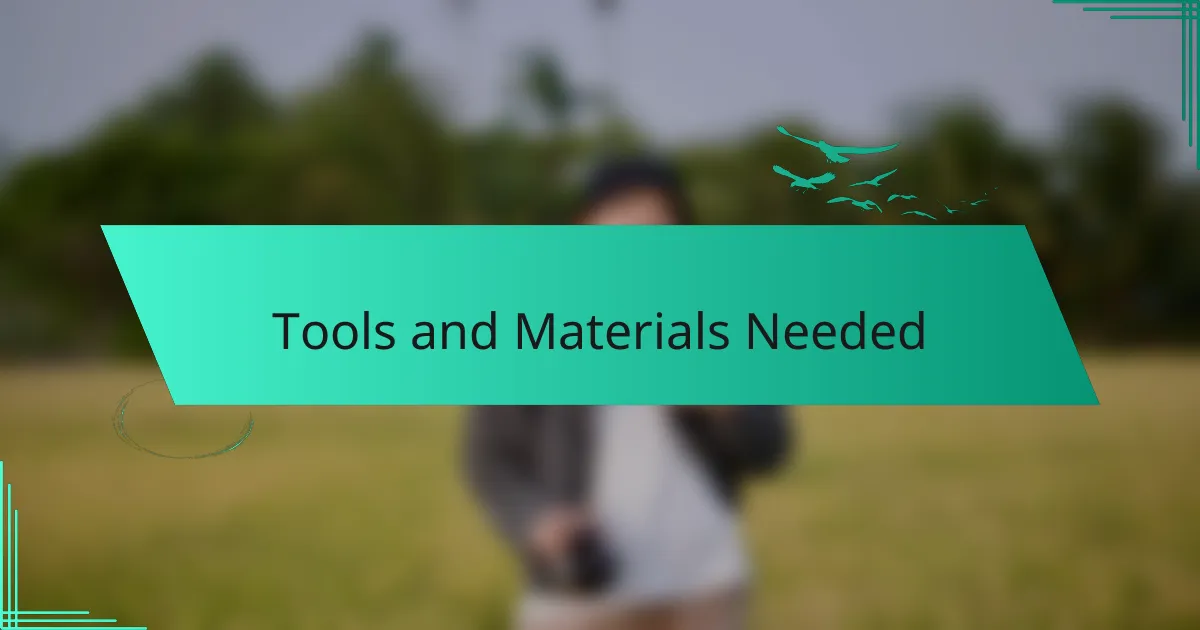
Tools and Materials Needed
When it comes to repurposing velvet curtains, having the right tools and materials makes all the difference. I remember the first time I tackled a project like this; it felt overwhelming at first, but once I gathered everything, my creativity really began to flow. You’ll want to collect basic sewing supplies like scissors, a sewing machine, and thread. Choosing colorful or textured options can elevate your project, making it truly unique.
Aside from sewing supplies, consider adding fabric glue for quick fixes and a measuring tape to ensure accuracy. Personally, I find it helpful to have pins on hand too, so I can secure the fabric before sewing. Adapting a vintage fabric like velvet can evoke fond memories and inspire new ideas, and having the right materials boosts confidence for any DIY project.
Here’s a handy comparison table to help you gather what you need:
| Tools/Materials | Purpose |
|---|---|
| Sewing Machine | Efficient sewing of layers |
| Fabric Scissors | Precise cutting of fabric |
| Thread | Joining fabric pieces together |
| Fabric Glue | Quick fixes and embellishments |
| Measuring Tape | Ensuring accurate dimensions |
| Pins | Securing fabric while sewing |
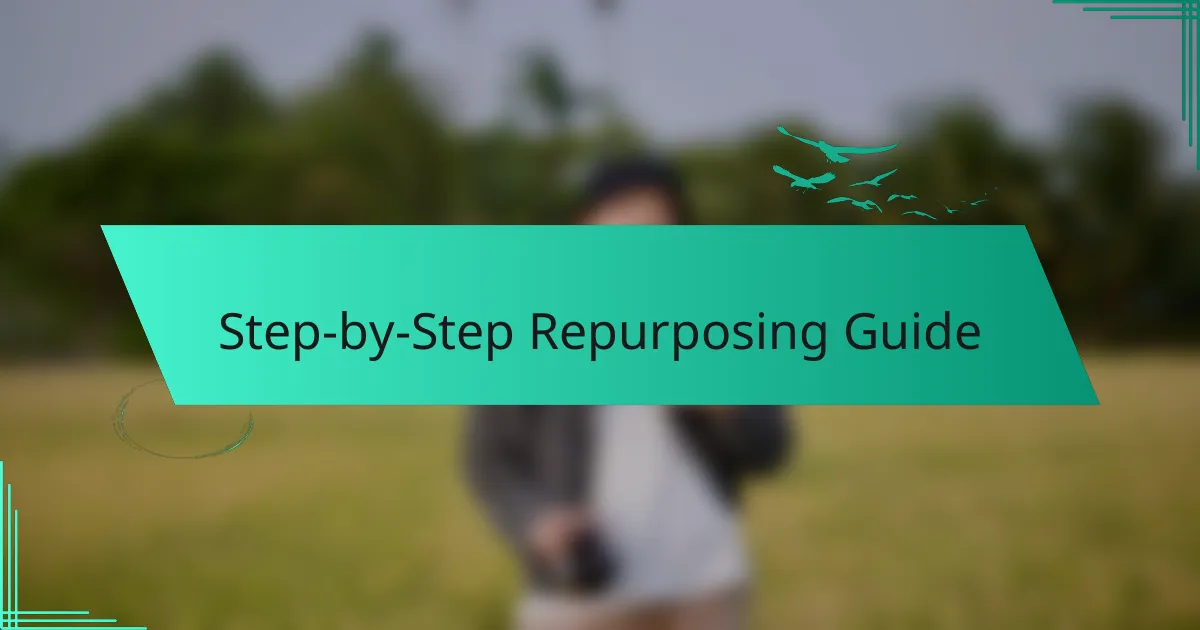
Step-by-Step Repurposing Guide
Gathering your materials is the first step in repurposing your velvet curtains. I still remember the thrill of unveiling my find at the thrift store. Once I had my curtains washed and pressed, I had a blank canvas ready for transformation. This initial prep work is crucial—clean fabric not only looks better but also makes your projects more enjoyable.
Next, I find it helpful to sketch out my ideas before diving in. When you’re managing a piece as rich and textured as velvet, visualizing the end result can spark further inspiration. Have you ever started a project with one idea, only to have it evolve into something even more fabulous? That’s the magic of DIY! I often jot down notes about dimensions and techniques, ensuring a smoother crafting experience as I go.
Finally, embracing the process is key. Sure, there might be some hiccups along the way—like when I miscalculated the size for a pillow cover and had to improvise. Those moments teach valuable lessons and encourage creativity. Don’t shy away from trial and error; every step contributes to the final masterpiece, making it uniquely yours. What’s the most surprising lesson you’ve learned during a DIY adventure?
